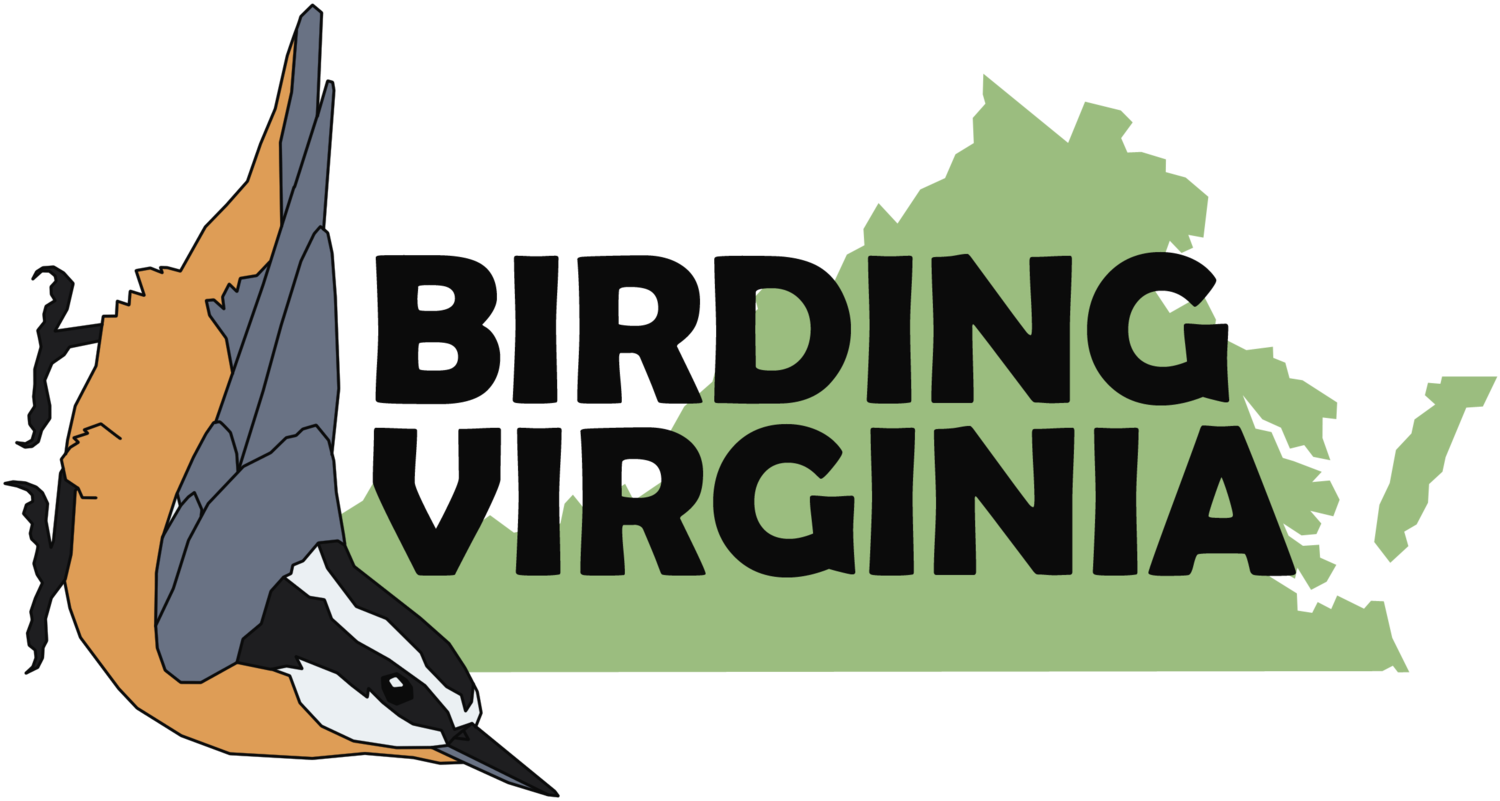Surely the unsung hotspot of Stafford County, Lake Mooney Park is seldom mentioned in the same breath as these storied spots. This 520-acre lake is a relatively recent addition to the Virginia landscape (as large reservoirs go), reaching full pool in early 2016. In addition to serving as a water supply for Stafford County, it is also a well-known fishing location, home to a variety of species of interest to anglers since it was first stocked in July 2017. Though it may not have the same renown among birders as with fisherfolk, it is surely a spot that should be on folks’ radar.
Access at this site is fairly straightforward. The main viewing point is from Lake Mooney Park, administered by Stafford County and located near the dam. There is ample parking here, though the lot is unpaved and can get a bit dicey after rain or snow. From mid-March through October 31, access is permitted from 8am to 8pm; this changes to 8am to 5:30pm from November 1 through mid-March. There are restroom facilities; these are typically clean and well-maintained, well exceeding the standard for public park restrooms. Lake Mooney Park also includes a walking path to the south of the parking area, which goes through an early successional meadow into mature woods and ultimately down to the Rappahannock. Apart from the park, additional views (including into some of the more distant coves) can be had from Rocky Run Rd. (654) on both the east and west sides of the lake.
At present, Lake Mooney boasts a fairly bread-and-butter bird list, well populated by expected species but with little in the way of rarities or even uncommon species. That said, this spot certainly holds potential and merits far more dedicated birding than it has thus far received. Any less common waterfowl, such as scoters or Long-tailed Duck, are possible here. With the right weather setup, tastier rarities like a phalarope or Cave Swallow could be in play. The “right” hurricane could deposit a whole roster of marquee seabirds here.
For more run-of-the-mill birding, the obvious time to visit is in the winter months, when Lake Mooney can be a great spot for waterbirds. It is particularly attractive to diving ducks, often hosting large multi-species rafts of Aythya ducks as well as many Buffleheads, Ruddy Ducks, and grebes (Pied-billed and Horned are most common, but Red-necked has occurred and rarer species are possible). Dabbling ducks are typically fewer, but do occur; several species are unreported as yet but likely visit the lake and may take shelter in the recesses of its coves. The open, grassy slopes of the dam are favored by Canada Geese. Sometimes few or none are present, but other times there are fairly large congregations, which puts Cackling Goose or better in play. Gulls are often present, but not always. At times, they seem to cycle through and it is not unusual to roll up on zero gulls but have dozens or more present when you leave. Ring-billed Gull is far and away the most common species, but others have occurred. If you’re lucky, a rogue Peregrine may buzz the gulls.
Land birding can be hit or miss here. The area around the dam is an open, grassy meadow that can be good for sparrows, including Savannah. There are some tracts of woods that can be worked for woodland passerines, while the grassy edges along the entrance road are good for sparrows - two American Tree Sparrows were even found here in 2025.
Outside the winter months, birding at Lake Mooney has been fairly scant. In fact, no checklists have been birded in the throes of summer (early July through the first week of September). While this is a time of year that seems less likely to produce exciting records, this is a dynamic enough spot that it merits attention year-round. At present, it is not known where mudflats might appear when the water is drawn down, but surely there is shorebird potential. A lake this big is likely attractive to multiple species of tern, though Caspian is the only one record so far. Perhaps an Anhinga could drop in, or maybe the surrounding wood edges could offer a robust list of migrants. Lark Sparrow has been twice reported - once in October, once in May, and given the habitat seems likely to occur again. Particularly given its proximity to I-95 (a mere 10 minute detour), this site should be on most birders’ radar and checked whenever possible.
Though not, by any definition, part of Lake Mooney, worth a mention is a farm pond with muddy edges that is likely to be passed by anyone coming in on Sanford Drive. This spot is worth a brief glance when passing, as it sometimes has ducks (though beware of the always-present plastic Gadwall decoys), but could also host Wilson’s Snipe and seems like a fine location for a Black-bellied Whistling-Duck to drop in.
Owner/Manager: Stafford County
eBird Hotspot: Lake Mooney Park
—Matt Anthony & Todd Day, February 2025
